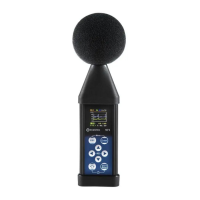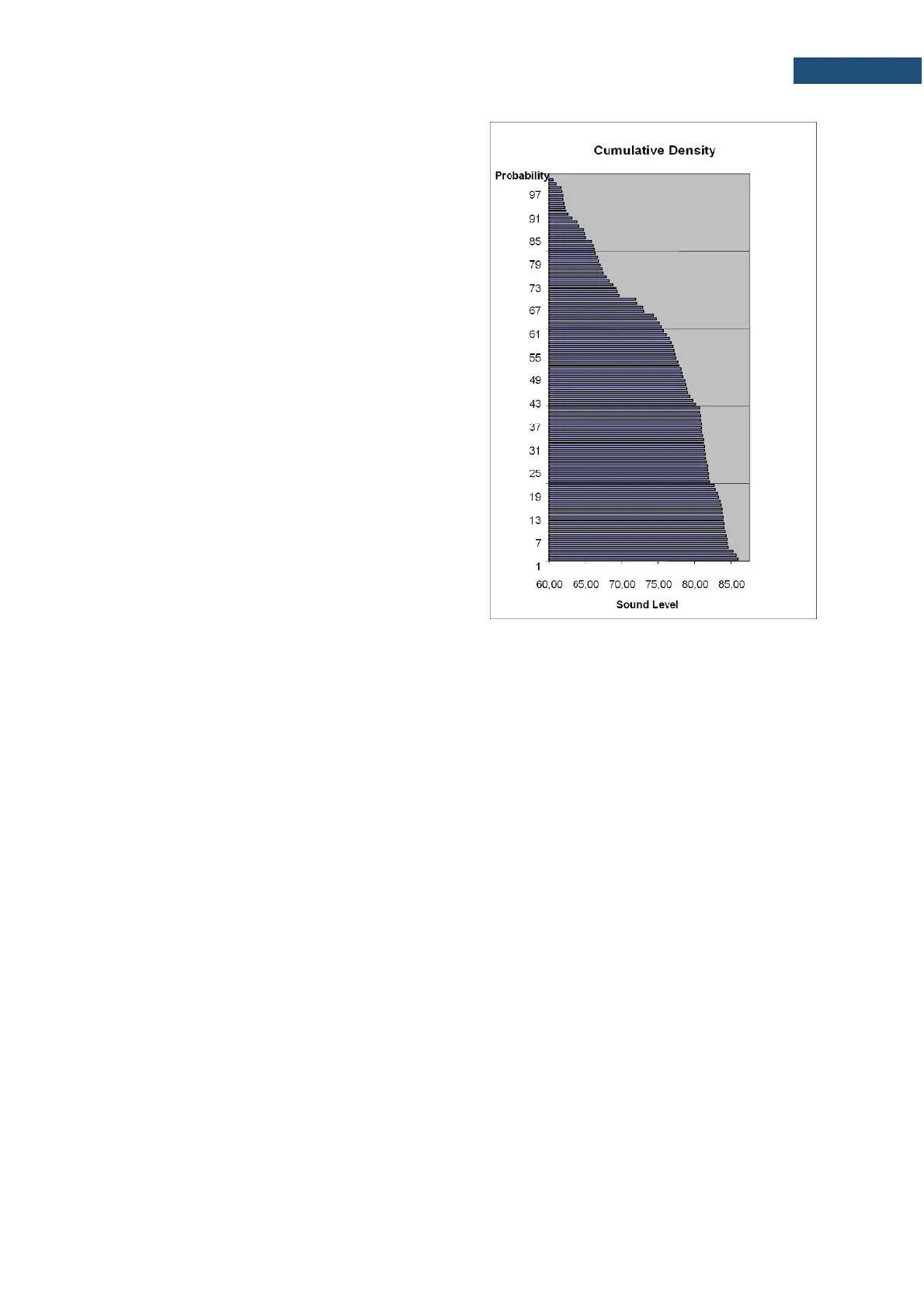Example:
Let us assume that L35 is equal to 76.8 dB. It means
that during the measurements the noise level 76.8 dB
was exceeded in not more than 35% of the
observation period.
The cumulative density function for the exemplary
data is presented in Figure on the right side. In order
to determine the Ln level one has to draw the
horizontal cursor and find out the crossing point
between the cumulative density function and the
cursor. In the instrument the user can determine 10
statistical levels - from L01 to L99 (1% step
of observation period).
The display in the instrument presents only first
statistical level N1 (set to: L01 up to L99).
The statistical level Ln value, the profile’s number the
statistics are taken from, the RMS detector (Lin., or
Exp.: Fast, Slow or Imp.), the filter’s name (A, C or
Z) and real time are displayed in the top-right side of
the display in one-result view mode.
Exemplary cumulative density

